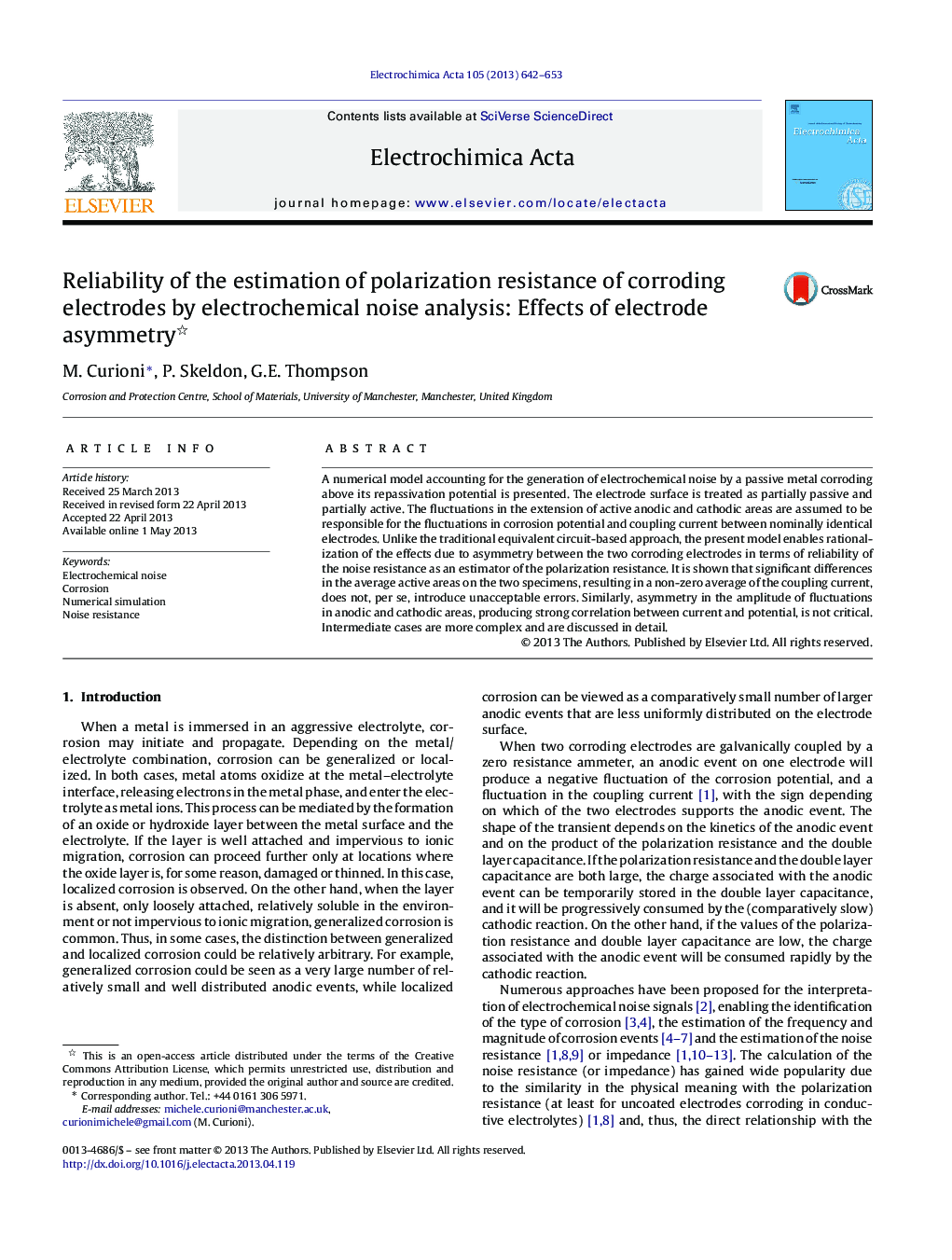| Article ID | Journal | Published Year | Pages | File Type |
|---|---|---|---|---|
| 6617862 | Electrochimica Acta | 2013 | 12 Pages |
Abstract
A numerical model accounting for the generation of electrochemical noise by a passive metal corroding above its repassivation potential is presented. The electrode surface is treated as partially passive and partially active. The fluctuations in the extension of active anodic and cathodic areas are assumed to be responsible for the fluctuations in corrosion potential and coupling current between nominally identical electrodes. Unlike the traditional equivalent circuit-based approach, the present model enables rationalization of the effects due to asymmetry between the two corroding electrodes in terms of reliability of the noise resistance as an estimator of the polarization resistance. It is shown that significant differences in the average active areas on the two specimens, resulting in a non-zero average of the coupling current, does not, per se, introduce unacceptable errors. Similarly, asymmetry in the amplitude of fluctuations in anodic and cathodic areas, producing strong correlation between current and potential, is not critical. Intermediate cases are more complex and are discussed in detail.
Related Topics
Physical Sciences and Engineering
Chemical Engineering
Chemical Engineering (General)
Authors
M. Curioni, P. Skeldon, G.E. Thompson,
